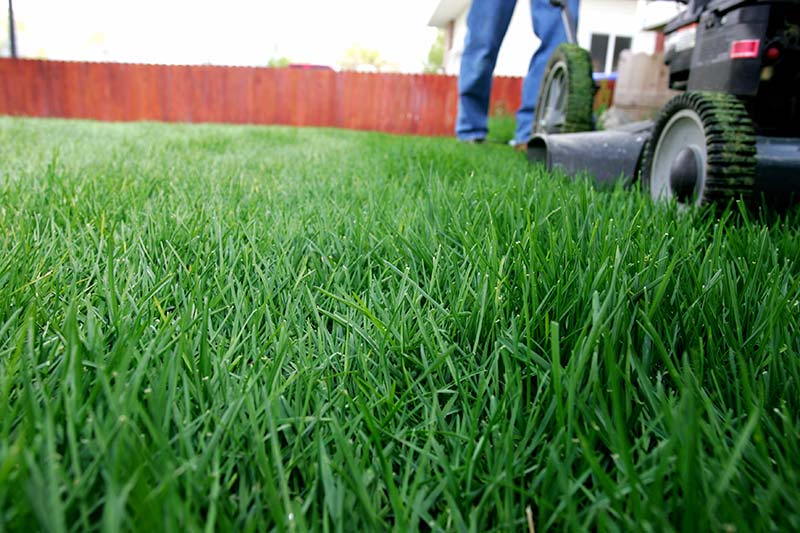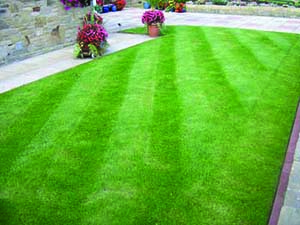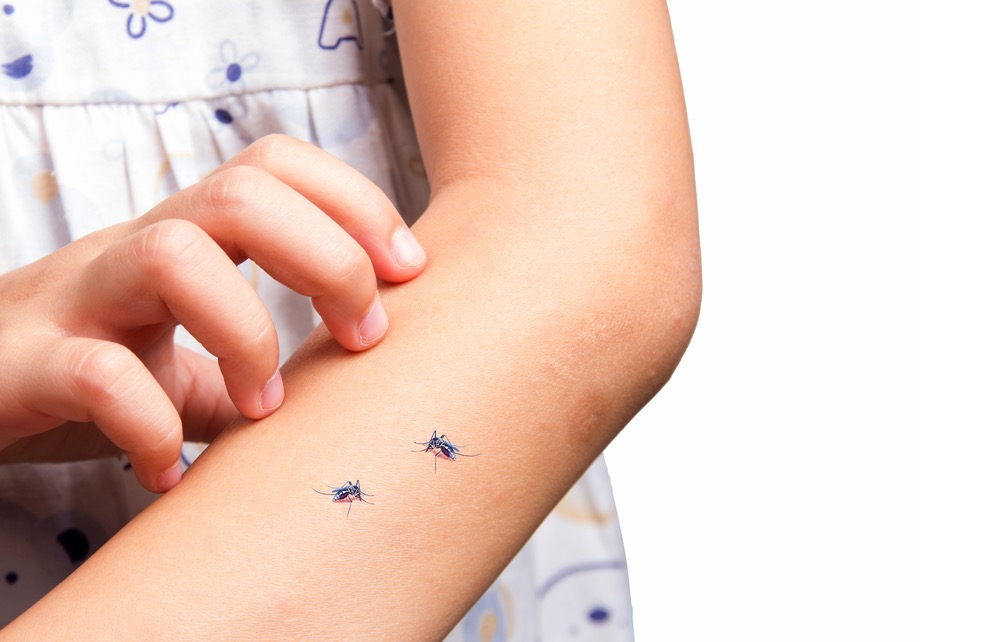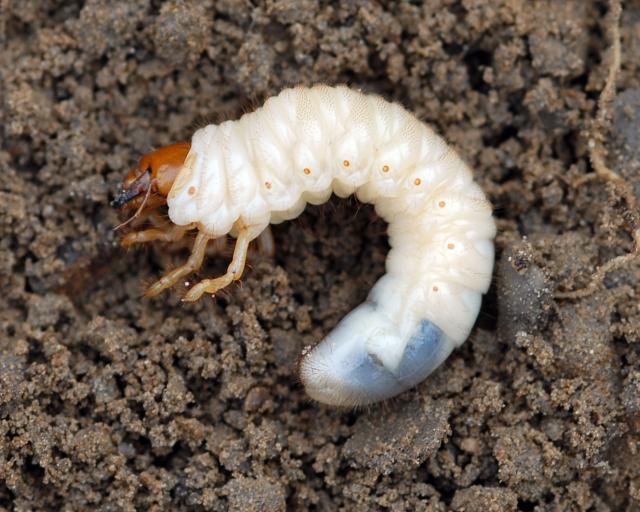It’s spring in Kansas City and along with warmer temperatures comes something not so welcomed – weeds. Green Head Turf put together a Weed Watch Guide of the most popular and pesky weeds in our area. Here’s how to identify the top six annoying weeds and more importantly, how to kill them.
Chickweed
 NAME: Chickweed (Stellaria media), starwort, satin flower
NAME: Chickweed (Stellaria media), starwort, satin flower
DESCRIPTION: An annual that rarely grows taller than 2 inches along the ground and forms a thick, dense mat that produces small, white flowers.
NOTORIOUS: Common chickweed can produce approximately 800 seeds which will remain viable for 7 to 8 years.
GROWING CONDITIONS: Will grow in a wide range of soils but does particularly well in neutral pH soils with high nitrogen and poorly in low pH or acid soils
HOW TO CONTROL: Best controlled in the spring or fall. Should be controlled before it flowers, which is in early spring.
Spring – Chickweed has a shallow root system and the best way to kill it is to pull the entire plant out of the ground by hand.
Fall – You can prevent chickweed seeds from germinating by applying a grassy weed preventer.
Annually – Another option is to dust chickweed with ammonium sulfate while the morning dew is still on it. Follow label directions for proper application rates.
Henbit
 NAME: Henbit (Lamium amplexicaule), Dead Nettle
NAME: Henbit (Lamium amplexicaule), Dead Nettle
DESCRIPTION: Member of the mint family with eaves that attach directly to a square stem and lavender, 1/2-inch flowers from March to June and again in September.
NOTORIOUS: Reproduces by seed, but also reproduces by stems that root easily wherever the stem joints touch the soil.
GROWING CONDITIONS: This winter annual that sprouts from seeds in September and grows rapidly in the fall and the following spring likes rich soil.
HOW TO CONTROL: In garden beds, heavy (2-3 inches) mulch is a good deterrent. It blocks the light from reaching the seeds. But in lawns, herbicides may be your best bet.
Fall – Best to control by applying a pre-emergent herbicide in fall which will form an herbicide barrier on top of the ground that will kill the henbit as soon as they germinate.
Spring – If you forgot to do that in the fall, you must apply a post-emergent herbicide early in spring. You must time the application before flowering because once henbit starts to bloom, seeds aren’t far behind. You want to kill the plants before the weeds release their seeds so you can kill next year’s crop before it even gets started.
Dandelions
 NAME: Dandelions (Taraxacum officinale), lion’s tooth, blowball
NAME: Dandelions (Taraxacum officinale), lion’s tooth, blowball
DESCRIPTION: Green flowers start as yellow blooms and turn into white fluffy seed heads that blow away with the wind. Below-ground, they have a taproot up to 10″ long. The taproot is thick but brittle and breaks easily leaving the part left behind to regenerate.
NOTORIOUS: Dandelions bloom throughout the summer season and their seeds can be windborne for several miles, making prevention of new infestations very difficult.
GROWING CONDITIONS: Dandelion is a perennial that grows best in moist areas in full sun; however, it can survive some shade and dry conditions once established.
HOW TO CONTROL: Hand removal is difficult at best, but there are special dandelion knives and other tools available designed to help remove the deep root without disturbing the grass around it greatly. It is always a good idea to soak the ground beforehand to increase your chances of getting the full root.
Fall – Early fall is the best time to kill dandelions with herbicides. In early fall, nutrients are transferred from the leaves down to the roots. Herbicides applied during this time follow the same path down to kill the plant, root and all.
Nutsedge
 NAME: Nutsedge (Cyperus esculentus)
NAME: Nutsedge (Cyperus esculentus)
DESCRIPTION: Nutsedge is a perennial, grass-like weed whose leaves are long, narrow and yellow-green, while the spiky head is purple or yellow. Because they grow faster than grass, they stick out like a sore thumb.
NOTORIOUS: The plants produce tubers on rhizomes, or underground stems, that grow as deep as 8 to 14 inches below the surface. Buds on the tubers sprout and grow to form new plants. These tubers and rhizomes survive in the soil and sprout the following spring.
GROWING CONDITIONS: Likes moist, poorly drained sections of your yard and hot weather.
HOW TO CONTROL: Once established, nutsedge plants are difficult to control. The best way to remove small plants is to pull them up by hand or to hand hoe. If you hoe, be sure to dig down at least 8 to 14 inches to remove the entire plant.
In addition to consistently removing small plants, you can reduce nutsedge populations by drying, or shading, them, but this isn’t usually too convenient in a lawn. Properly timed applications of herbicides. The key factor to sedge control is persistence. Repeat applications at prescribed intervals shown on the herbicide label will be required for acceptable control within a given year.
Crabgrass
 NAME: Crabgrass (Digitaria), finger-grass, and fonio
NAME: Crabgrass (Digitaria), finger-grass, and fonio
DESCRIPTION: Low-growing, summer annual that spreads by seed and from rootings of the joints that lie on the soil.
NOTORIOUS: Able to grow vigorously in hot, dry conditions. Before dying in the fall, a single weed can distribute thousands of seeds that will be ready to germinate the following spring.
GROWING CONDITIONS: Likes lawns that are watered lightly, underfertilized, and poorly drained
HOW TO CONTROL: Controlling crabgrass before it sets seed is important, because the seeds can remain viable for at least 3 years in soil.
Higher mowing, usually at one of the top two setting on your mower, encourages lawn grasses to shade soil which helps prevent the germination of crabgrass seeds. Also water lawns deeply and less frequently.
Spring – Apply pre-emergent herbicides in early spring before crabgrass germinates, usually around the first of March.
Foxtail
DESCRIPTION: Most species are perennial weeds, with dense, cylindrical flower clusters that are spikelike and bristly resembling foxes’ tails.
NOTORIOUS: Rapid growth and thick “foxtails” of seeds spread prolifically.
GROWING CONDITIONS: Grows in areas of moist or dry soil and is tolerant of a wide range of conditions.
HOW TO CONTROL: If you are against chemical herbicide use, pull off the seed heads to prevent the plant from repopulating the area. Dig deeply to get the long roots, using a long slender weeding tool.
Spring – The best defense is keeping foxtail from ever germinating. Begin before you even see the weeds with a pre-emergent herbicide safe for turf grasses.
Anytime – Post-emergence herbicides are effective at killing foxtail weeds as well. Choose one that is safe for use in turf grass and that specifies its use against foxtail.
Other Weed Prevention Tips
Now you know the worst offenders in your lawn and how best to deal with them. But there are also some lawn maintenance tips that will help keep all weeds out of your yard. The best way to prevent future weed problems is to maintain a thick, healthy lawn. A thick lawn will help prevent weed seeds from sprouting and seedlings from becoming established.
Number 1 – Feed four times a year – two times in the spring and two times in the fall.
Number 2 – Deep, infrequent watering will also help discourage weeds since they can thrive on less water prefer damp soil.
Number 3 – Mow high to help control weeds – Depending on your turf type, you can help control weeds by changing the way you mow. Mowing your lawn at the proper height, which in most cases is one of the two highest settings on your mower, lets the grass crowd out the weeds.
If you need any help with weeds in your lawn, call the weed-control experts at Green Head Turf Services at (816) 944-3168.






